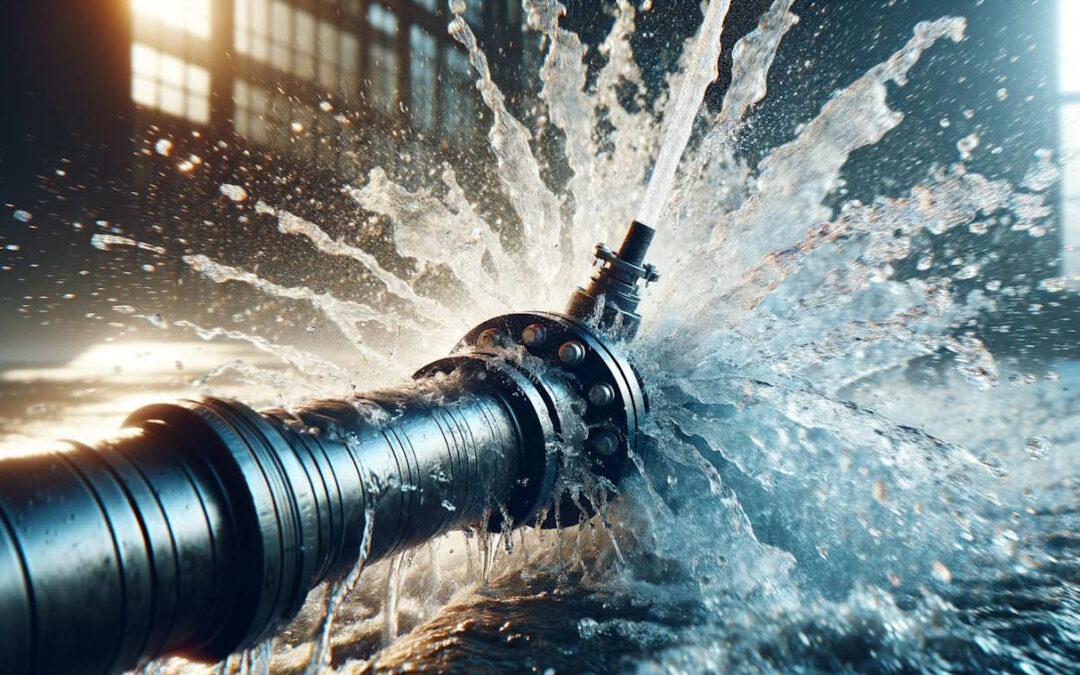Leading Water Leak Detection Methods to Shield Your Home from Water Damages
Leading Water Leak Detection Methods to Shield Your Home from Water Damages
Blog Article
Ingenious Solutions for Very Early Detection of Water Leakages in Buildings and Infrastructure
As the stability of buildings and facilities is vital, the obstacle of very early discovery of water leaks has spurred ingenious remedies that assure to change the way we guard against prospective problems. From advanced leak detection modern technologies to the deployment of IoT sensors for real-time monitoring, the landscape of leakage prevention is evolving rapidly. Artificial intelligence formulas use a glance right into the future of leakage forecast, while thermal imaging offers a non-intrusive approach for pinpointing hidden leakages. Automated water flow analysis systems are reshaping how leakages are recognized and resolved, leading the way for an aggressive strategy to water leak detection. Each of these options holds the vital to making sure the dependability and long life of our developed atmosphere, prompting a shift towards an extra sustainable and reliable future.
Advanced Leakage Discovery Technologies
Advanced leak discovery modern technologies, geared up with innovative sensors and formulas, play a critical duty in swiftly determining and determining water leaks in various settings. Electro-magnetic sensors can determine modifications in electro-magnetic areas caused by water, offering yet one more layer of leakage detection ability.

IoT Sensors for Real-Time Monitoring
In the realm of contemporary water leakage discovery, the integration of IoT sensors for real-time surveillance stands for a crucial improvement in boosting proactive leakage discovery capacities. These sensors provide continual surveillance of water supply, giving real-time data on water flow prices, pressure variations, and temperature level modifications. By leveraging IoT modern technology, these sensing units can detect even the tiniest abnormalities in water usage patterns, making it possible for very early identification of possible leakages prior to they rise into major problems.
IoT sensing units send information to a centralized platform, where sophisticated algorithms evaluate the details and generate notifies or alerts when irregularities are detected. This real-time monitoring capacity allows home proprietors or facility supervisors to promptly address leaks, reducing water damages, minimizing repair work expenses, and conserving water sources.
Moreover, IoT sensors can be incorporated with structure monitoring systems, enabling computerized reactions to found leaks, such as shutting off water valves or turning on pumps to reduce the impact of leaks. On the whole, the application of IoT sensors for real-time monitoring significantly improves the efficiency and effectiveness of water leak detection in buildings and infrastructure.
Equipment Knowing Algorithms for Leakage Forecast

One key benefit of utilizing artificial intelligence for leakage prediction is its capability to continuously learn and enhance its precision over time. As even more information is gathered and fed right into the algorithm, it can refine its forecasts and adapt to altering conditions, ultimately increasing the dependability of leak detection systems.
Furthermore, artificial intelligence formulas can aid in identifying refined indications of leaks that may go undetected by standard tracking methods. water leak detection. By analyzing intricate information embed in real-time, these algorithms can supply very early warnings and alerts, enabling for punctual treatment and precautionary upkeep to mitigate possible water damages and connected costs
Making Use Of Thermal Imaging for Leak Detection
Thermal imaging technology supplies an appealing method for identifying water leakages in numerous systems and frameworks. By making use of infrared radiation and temperature level variances, thermal imaging cameras can recognize concealed leaks that are not quickly noticeable to the naked eye. When water gets away from pipelines or structures, it commonly transforms the temperature of the surrounding location, developing temperature differentials that thermal video cameras can catch. These temperature abnormalities are after that translated right into noticeable images, highlighting the precise location of the leakage.
Among the vital advantages of thermal imaging for leakage detection is its non-intrusive nature. Unlike conventional approaches that may need burglarizing walls or floorings to locate leakages, thermal imaging enables non-destructive testing. This not just saves time and minimizes prices yet also lessens disruption to the structure or infrastructure being evaluated. In addition, thermal imaging can quickly check large areas, providing an extensive introduction of possible leakage resources in a prompt fashion. Generally, the usage of thermal imaging modern technology boosts the efficiency and accuracy of water leak discovery, making it a valuable device for maintaining the honesty of buildings and infrastructures.
Automated Water Flow Analysis Systems
Exactly how can automated water circulation analysis systems reinvent the discovery and administration of leaks in different systems and facilities? Automated water flow analysis systems offer an aggressive strategy to leak discovery by continuously monitoring water circulation rates and patterns. By developing standard information, these systems can swiftly identify inconsistencies that might indicate a leak, enabling punctual intervention to stop comprehensive damage.
These systems make use of advanced formulas to evaluate real-time information and supply instant signals when abnormalities are identified, enabling for quick activity to be taken. In addition, automatic water circulation analysis systems can be integrated with building monitoring systems read this post here or IoT platforms, improving overall efficiency and enabling remote monitoring capacities.
Moreover, the information collected by these systems can be used for anticipating upkeep purposes, helping to identify potential powerlessness in the framework before leakages happen. Overall, the execution of computerized water flow analysis systems can considerably improve leak detection and management methods, inevitably causing see this cost savings, minimized water wastage, and boosted sustainability in buildings and facilities.

Verdict
To conclude, the assimilation of innovative leakage detection innovations, IoT sensing units, artificial intelligence algorithms, thermal imaging, and automated water circulation analysis systems offers cutting-edge remedies for early discovery of water leakages in structures and framework. These modern technologies enable real-time surveillance, prediction of leakages, and effective discovery methods to learn the facts here now protect against water damage and wastage. Executing these remedies can assist in maintaining the stability and sustainability of water systems in various setups.
Report this page